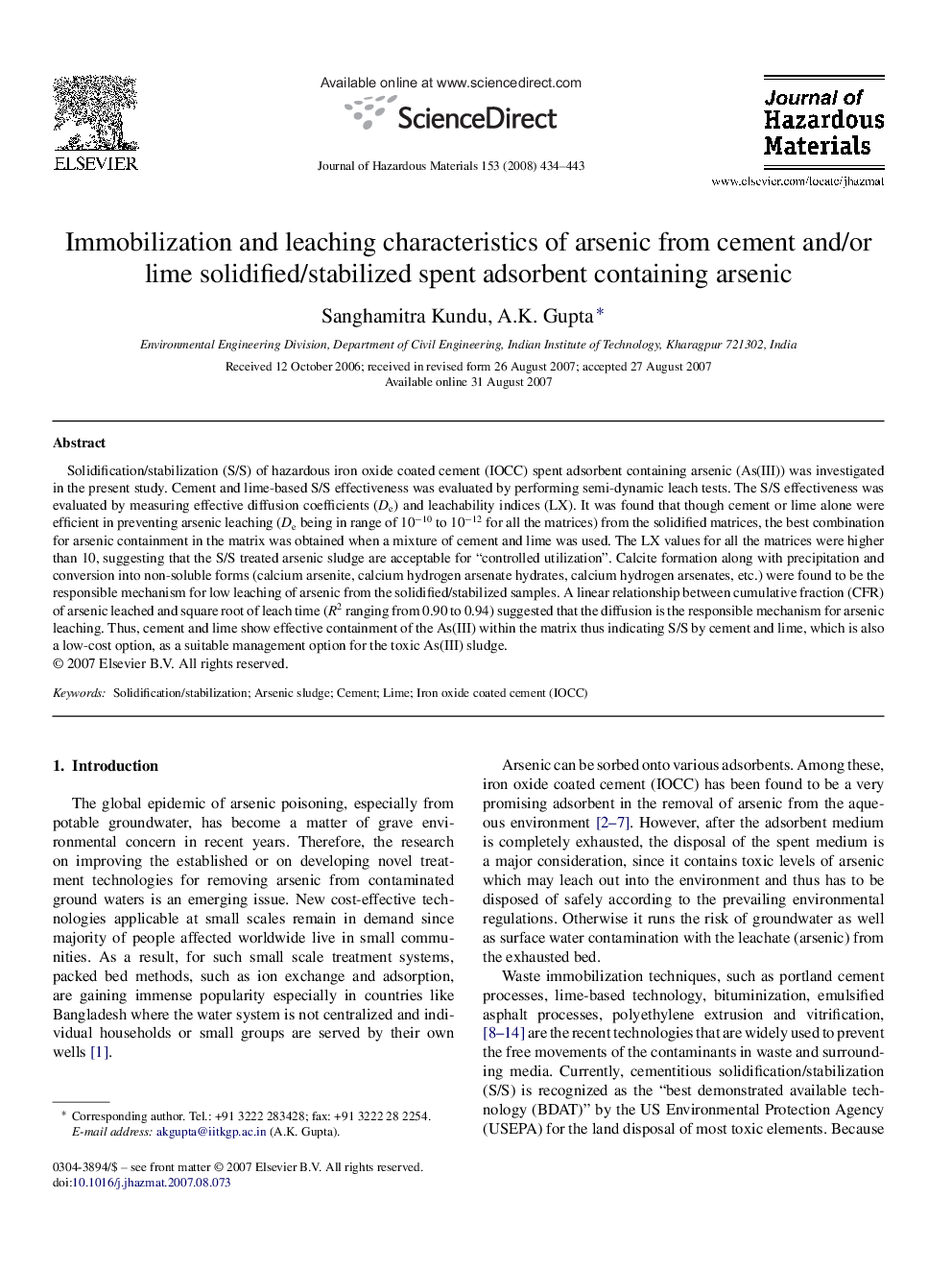| Article ID | Journal | Published Year | Pages | File Type |
|---|---|---|---|---|
| 583128 | Journal of Hazardous Materials | 2008 | 10 Pages |
Abstract
Solidification/stabilization (S/S) of hazardous iron oxide coated cement (IOCC) spent adsorbent containing arsenic (As(III)) was investigated in the present study. Cement and lime-based S/S effectiveness was evaluated by performing semi-dynamic leach tests. The S/S effectiveness was evaluated by measuring effective diffusion coefficients (De) and leachability indices (LX). It was found that though cement or lime alone were efficient in preventing arsenic leaching (De being in range of 10â10 to 10â12 for all the matrices) from the solidified matrices, the best combination for arsenic containment in the matrix was obtained when a mixture of cement and lime was used. The LX values for all the matrices were higher than 10, suggesting that the S/S treated arsenic sludge are acceptable for “controlled utilization”. Calcite formation along with precipitation and conversion into non-soluble forms (calcium arsenite, calcium hydrogen arsenate hydrates, calcium hydrogen arsenates, etc.) were found to be the responsible mechanism for low leaching of arsenic from the solidified/stabilized samples. A linear relationship between cumulative fraction (CFR) of arsenic leached and square root of leach time (R2 ranging from 0.90 to 0.94) suggested that the diffusion is the responsible mechanism for arsenic leaching. Thus, cement and lime show effective containment of the As(III) within the matrix thus indicating S/S by cement and lime, which is also a low-cost option, as a suitable management option for the toxic As(III) sludge.
Related Topics
Physical Sciences and Engineering
Chemical Engineering
Chemical Health and Safety
Authors
Sanghamitra Kundu, A.K. Gupta,
